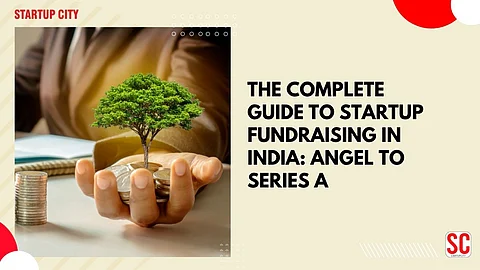

You’ve poured your heart into building your startup — late nights, personal savings, endless coffees, and one big dream. But now you’re at a crossroads. You need capital — real capital — to build a team, scale your product, and chase real growth. Sound familiar?
If you're wondering how to go from a bootstrapped idea to a funded startup, you’re not alone. Every founder hits this fundraising curve. And if you're targeting the Indian market, let me show you how the path from angel funding to Series A truly works.
In this complete guide to startup fundraising in India, I’m breaking it all down — the stages, the mindset, the investors, and the mistakes to avoid.
Let me be real with you — fundraising isn't just about getting a cheque. It's about getting the right cheque from the right investor at the right time.
In my experience, the smartest founders don’t just raise money; they raise smart money — capital that comes with connections, experience, and strategic support.
“You don’t raise money when you need it. You raise money when you can.”
Naval Ravikant, AngelList
India is now the third-largest startup ecosystem in the world, with over 100+ unicorns and thousands of active angel investors and venture capitalists.
According to Inc42, Indian startups raised over $11 billion in 2023, despite a global funding slowdown. This tells you one thing: investors are still betting big on India.
This is where most of us start. You’ve got a strong MVP, maybe some early users, and a burning desire to solve a real problem.
Who funds this stage?
Angel investors
Startup accelerators (e.g., Y Combinator, Techstars India)
Early-stage micro-VCs
Friends & family (yes, them too!)
What they care about:
You as a founder (your story, grit, clarity)
The problem you're solving
Market opportunity
MVP traction (users, pilots, engagement)
Vision for growth
Checklist to raise seed funding:
A powerful pitch deck (story + data + vision)
A working MVP or proof of concept
Early user metrics or testimonials
Cap table clarity
“Investors bet on jockeys, not just horses. At this stage, YOU are the brand.”
Once you’ve validated your idea with early users or clients, it’s time to bring in angels who can open doors — not just wallets.
Ideal funding amount: ₹25 lakh – ₹2 crore
Time to raise: 3–6 months
Investor expectation: 5–20x return in 5–7 years
Pro tips:
Network aggressively: Attend pitch events, startup meetups, and demo days.
Use platforms like LetsVenture, AngelList India, and Venture Catalysts.
Show traction, not just intention.
Founder's Insight:
"We raised our first ₹1 crore from two angel investors after 11 rejections. The turning point? We showed how our CAC dropped 40% in 3 months." — Ankit, co-founder of a SaaS startup in Bengaluru
You’ve got real users, revenue, and a working business model. Now, VCs step in to help you scale fast and wide.
Ideal funding amount: ₹10 crore – ₹50 crore
Who’s interested now?
Institutional VCs like Sequoia India, Matrix Partners, Lightspeed, Accel
Family offices and large angel syndicates
Investor checklist:
Revenue (or at least a scalable monetization model)
Defined unit economics (LTV > CAC)
Repeatable growth engines (SEO, paid, partnerships, etc.)
Strong team and product-market fit
“Series A is no longer about potential. It’s about performance + potential.”
Let’s face it. Raising capital is part storytelling, part sales, and part resilience.
10–12 slides max
Start with your “why”
Add real numbers: traction, TAM, CAC, LTV
End with a strong “Ask”
Don’t spray and pray. Create a list of 25–50 aligned investors.
Use LinkedIn + cold emails + intros. Personalize every message.
Avoid over-valuation at the early stage. Why? It might kill your next round. Use comparables and revenue-based models.
Financial projections
Legal docs (incorporation, cap table, IP)
Product demo videos or user flows
Chasing investors without traction.
Over-promising in pitches. It destroys credibility.
Not understanding term sheets. Always consult a startup lawyer.
Waiting too long to raise. Raise before you run dry.
Ignoring the power of storytelling. Data tells. Story sells.
Register as a DPIIT-recognized startup for tax exemptions and benefits.
Leverage SIDBI's Fund of Funds scheme.
Explore government grants like BIRAC (for biotech) or Startup India Seed Fund.
Keep your equity clean — avoid too many co-founders or early giveaways.
Listen, if it was easy, everyone would be doing it. Fundraising will test your belief, your pitch, your patience — and your passion.
But when done right, it’s one of the most powerful catalysts in your startup journey.
So go ahead — tell your story, back it with data, build relentlessly, and raise like a founder who knows they belong in the big leagues.
Start by reviewing your pitch deck.
Research 10 Indian angels or VCs in your niche.
Apply to 2 accelerator programs this week.
And remember — you’re not just raising money. You’re raising belief.